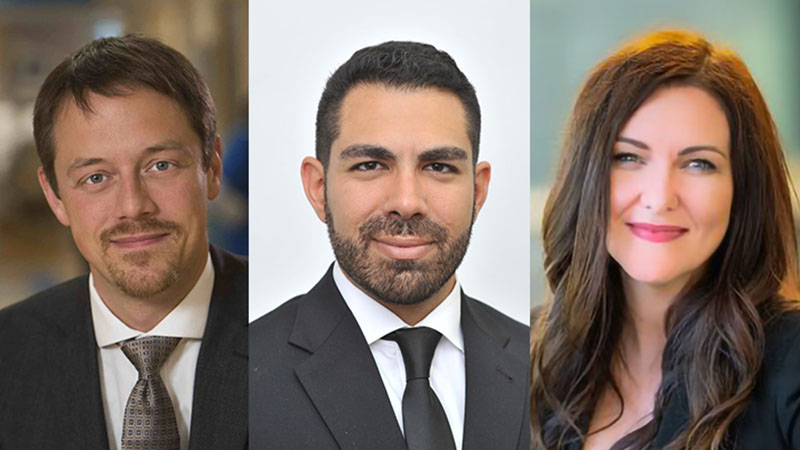
by Scott Janssen
“For months as I visited Joe as his hospice social worker, he had remained silent about World War II. Now he was bedbound and dependent on others for help with personal care. The hardest part though was “being stuck in bed with too much time to think.”
When I asked what he thought about he started talking about friends killed during the war. These memories, it turned out, had recently begun intruding into his mind and stirring intense feelings of grief and guilt.
Talking about combat or other psychologically traumatic events can overwhelm patients, potentially triggering defensive behaviors, intense physiological sensations, or distressing emotions. I was careful not to push too hard, letting Joe decide how much he wanted to unpack.
At one point I asked if he had ever thought he was going to die amidst the war’s cataclysmic violence.
“All the time,” he said.
“Did you ever experience anything unusual? Anything you couldn’t explain?”
He asked what I meant. I told him about near-death experiences which include features like leaving one’s body, dilation in one’s experience of time, panoramic life review, expansive spiritual awareness, and/or meeting deceased loved ones.
“Nothing like that,” he said. “Do people report other kinds of crazy stuff?”
“It’s not crazy,” I said reassuringly. “These kinds of experiences are common during combat as well when people are dying. Are you thinking of something in particular?”
“Maybe,” he said self-consciously.
I gave him a reassuring nod; then he told me about a friend who had “visited” him shortly after being killed.
“I was wide awake that night. I wasn’t groggy or dreaming. He just appeared out of nowhere, standing next to me. No wounds, no blood. He didn’t look scared. He actually looked happy. The whole thing felt as real, in some ways more real, as anything I’ve ever experienced.”
Despite this sense of ‘hyper-reality,’ in the days that followed Joe started wondering if he had cracked under the pressure. He decided not to tell anyone about what had happened.
Most hospice and palliative care professionals are aware that these kinds of unusual experiences are common as patients near death and among those who are grieving. These include near-death experiences, deathbed visions, end-of-life dreams, and the kind of after-death communication Joe described.
Based on clinical observation, I have found that offering terminally ill patients a safe, supportive context for sharing and processing these experiences offers therapeutic benefits such as: validating important experiences which others may have dismissed; building trust; improving end-of-life communication; and enhancing comfort and coping.
When I told Joe that after-death communication reports were common among those who are grieving [1] he expressed relief and joy saying it was “like a weight off my shoulders.” The simple act of normalizing the experience reassured him that he had not “cracked” under pressure. He was not alone.
These phenomena tend to have positive impacts such as decreasing fear of death, bringing peace, or deepening one’s appreciation for important relationships. By taking these experiences seriously, hospice and palliative care staff can leverage these positive aftereffects to help patients who may be struggling with the challenges of illness and/or dying.
Research suggests that simply giving seriously ill patients information about these kinds of experiences, regardless of whether they have had one, can decrease their fear of death and enhance comfort. [2] It can also bring peace to those facing the challenges of bereavement. [3, 4]
Inquiring into whether patients have had such experiences can stimulate broader end-of-life conversations. Many patients want to learn more. Responding to questions and providing education allows end-of-life professionals to communicate open-mindedness and trustworthiness to patients who may want to share or process something unusual.
These conversations can elicit questions, thoughts, or concerns that have been on a patient’s mind but which have gone unspoken. Often these questions have to do with death, the dying process, or ‘big questions’ about life meaning or spiritual concerns.
During such conversations patients and family members often share stories with each other that they’ve experienced or about which they have heard. And this kind of sharing can enhance feelings of closeness, relational support and foster the expression of previously unexpressed thoughts and feelings.
When providing education I avoid speculations about the origins of these experiences. It’s easy to get lost in the debate between those asserting that these reports can be reduced to physiological, pharmacological, or psychiatric processes and those pointing to research suggesting that these explanations are insufficient. [5, 6]
Instead, I’ve found it helpful to focus on the frequency with which these events seem to occur, their features, and the impact they tend to have on those who report them. If a patient is interested in further exploration I might recommend books, research articles, or websites depending on the nature of their interest.
Another reason for inquiring into such experiences is that they can become sources of comfort at the end of life. In Joe’s case, talking about his after-death communication allowed him to gain perspective on previously undisclosed anxieties about dying and fear of God’s punishment.
In the course of reflecting on his experience, it emerged as a profound and significant event. Joe reported a decreased fear of death, reduced feelings of guilt about having survived a war in which so many of his friends had been killed, decreased fear of punishment and his intrusive memories ceased.
Affirming that, for Joe, the experience was real “made death feel less violent, less harsh.” Processing the after-death communication led him to conclude that his friend had come back “to let me know he’s safe. He’s out there waiting for me, watching over me. I figure if he’s doing okay on the other side there’s hope for me yet.”
Of course, not all patients are interested in these experiences or inclined to ascribe transpersonal meaning to them. Some dismiss them or find them troubling.
Despite positive aftereffects, near-death experiences, after-death communication, and other experiences can cause distress related to having had an experience that collides with one’s worldview or philosophical beliefs. Inquiring about these experiences in a nonjudgmental fashion allows counseling staff to identify patients who may be having anxieties about them and who are in need of support.
Knowing how to screen for and compassionately discuss these events should be a standard feature in the training of all end-of-life professionals. Unfortunately, this is often not the case.
For example, in a critique of palliative medical education in the United Kingdom, Abel and Kellehear note that standard training includes information about “confusional states and hallucinations” related to disease or psychiatric processes but there is no mention of “common and well-documented experiences near-death that do not conform to these psychiatric categories – near-death experiences, deathbed visions, or visions of the bereaved. The prevalence of these experiences at the end of life is significant and varies from 10% – 80%.” [7]
In an article on responding to patients who have had near-death experiences, Samoilo and Corcoran offer suggestions for professionals. [8] I have adapted these recommendations to apply to a wider range of end-of-life experiences:
- Learn about the frequency, characteristics, and impact of these experiences. If a patient survives a potentially life-threatening event such as surgery, cardiac arrest, or trauma, or if they are grieving the death of a loved one, ask directly if they have experienced anything unusual. Encourage them to share it if they so choose.
- Respond compassionately without judging, dismissing, or challenging.
- Be prepared to provide accurate information that is free from bias. This may include printed materials and/or directing patients and families to reliable websites such as the International Association for Near-Death Studies.
- Have staff available, such as social workers or chaplains, specifically trained in working with patients who have had these experiences.
While these events can occur across the life span they are especially common among those who are dying. Whatever beliefs healthcare professionals may have regarding the origins of these experiences, they are typically perceived as very real by those who have had them. Dismissing them, explaining them away, or attempting to diagnose psychopathology can create distress, undermine positive coping and diminish relational trust. Allowing patients and their loved ones to share and process them and to decide for themselves the meaning these events hold can be a significant psychological and emotional support to those who are dying. [9]
About the Author
Scott Janssen, MA, MSW, LCSW is a social worker with the University of North Carolina Hospice. A member of the National Hospice and Palliative Care Organization’s Trauma-Informed Care Work Group, he has written extensively about trauma-informed care of terminally ill patients. His articles on experiences like after-death communication have appeared in Social Work Today, American Journal of Nursing, Journal of Near-Death Studies, and the Washington Post.
References
- Streit-Horn, J. A systematic review of research on after-death communication (ADC) (doctoral dissertation). 2011. University of North Texas: Denton, Texas. https://digital.library.unt.edu/ark:/67531/metadc84284/
- Foster, R., Maxwell, L., & Butler, W. Coping with cancer: Case studies on the effects of learning about near-death experiences. Journal of Near-Death Studies. 2020. 38(2): 87-100.
- Kerr C. Death is but a dream: Finding hope and meaning at life’s end. 2020. New York: Avery. https://www.penguinrandomhouse.com/books/604704/death-is-but-a-dream-by-christopher-kerr-md-phd-with-carine-mardorossian-phd/
- Foster, R. & Holden, J. External connection: An exploratory study of the effects of learning about near-death experiences on adult grief. Journal of Loss and Trauma. 2014.19: 40-55. https://www.tandfonline.com/doi/abs/10.1080/15325024.2012.735189
- Long, J. Near-death experiences evidence for their reality. Missouri Medicine. 2014. 111(5): 372–380. https://www.ncbi.nlm.nih.gov/pmc/articles/PMC6172100/
- Holden, J., Greyson, B. & James, D. (2009). The handbook of near-death experiences: Thirty years of investigation. Santa Barbara, CA. Praeger Publishers. https://www.researchgate.net/publication/232545263_The_Handbook_of_NearDeath_Experiences_Thirty_Years_of_Investigation
- Abel, J. & Kellehear, A. Palliative curriculum re-imagined: A critical evaluation of the UK palliative medicine syllabus. Palliative Care Research and Treatment. 2018. 11:1-7. https://www.ncbi.nlm.nih.gov/pmc/articles/PMC5977434/
- Samoilo, l., & Corcoran, D. Closing the medical gap of care for patients who have had a near-death experience. Narrative Inquiry in Bioethics. 2020. 10(1): 37-42. https://muse.jhu.edu/article/756188/pdf
- Holden, J., Kinsey, L., & Moore, T. Disclosing near-death experiences to professional healthcare providers and non-professionals. Spirituality in Clinical Practice. 2014. 1(4): 278-287. https://www.researchgate.net/publication/280326527_Disclosing_Near-Death_Experiences_to_Professional_Healthcare_Providers_and_Nonprofessionals



